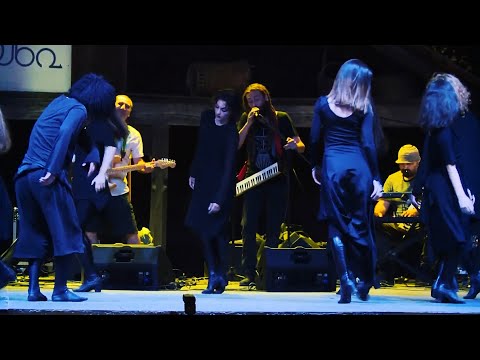Georgian art | Wikipedia audio article
This is an audio version of the Wikipedia Article:
Georgian art
00:00:49 1 Notable Georgian artists
00:01:45 2 See also
Listening is a more natural way of learning, when compared to reading. Written language only began at around 3200 BC, but spoken language has existed long ago.
Learning by listening is a great way to:
- increases imagination and understanding
- improves your listening skills
- improves your own spoken accent
- learn while on the move
- reduce eye strain
Now learn the vast amount of general knowledge available on Wikipedia through audio (audio article). You could even learn subconsciously by playing the audio while you are sleeping! If you are planning to listen a lot, you could try using a bone conduction headphone, or a standard speaker instead of an earphone.
You can find other Wikipedia audio articles too at:
/ @wikipediatts983
You can upload your own Wikipedia articles through:
https://github.com/nodef/wikipedia-tts
"The only true wisdom is in knowing you know nothing."
- Socrates
SUMMARY
=======
Georgian art (Georgian: ქართული ხელოვნება) has evolved for millennia. With roots in rich archaic and ethnic tradition, Georgian art has grown along with the development of the Georgian statehood, starting from the ancient kingdoms of Colchis and Iberia. The location of Georgia on the crossroads of Asia and Europe has brought travelers, merchants, missionaries and conquerors of all kinds and creeds, and defined the country's cultural and artistic environment throughout its history. Georgian art tradition has thus experienced influences from Mesopotamian, Anatolian, Greek, Persian, Roman and Byzantine art throughout antiquity. It has further grown within the framework of Christian ecclesiastical and middle-eastern art of the Middle Ages, and ultimately it has evolved in the context of European and Russian art from the 19th century onwards.
wikipedia tts-ის სხვა ვიდეოები
 05:14
05:14
Principality of Svaneti | Wikipedia audio article
 24:42
24:42
Eduard Shevardnadze | Wikipedia audio article
 00:59
00:59
Bolnisi cross | Wikipedia audio article
 01:08
01:08
Georgian Stock Exchange | Wikipedia audio article
 02:29
02:29
Lazica | Wikipedia audio article
 04:34
04:34
Akhalkalaki | Wikipedia audio article
 00:51
00:51
Samachablo | Wikipedia audio article
 01:34
01:34
Dzala ertobashia | Wikipedia audio article

მსგავსი ვიდეოები

Lech Mankiewicz | Digital revolution in education - why we c...
Educare Georgia

Tbilisi (Tiflis) | Kartlis Deda | Elguja Amashukeli | Vahtan...
Ahmet Çağan

Art and protest | ხელოვნება და პროტესტი | Chai Khana
Chai Khana

🇯🇵🇬🇪 ასამი შოჯი | იაპონელი მხატვარი საქართველოში
INDIGO MAGAZINE

Картины Моссе и Ираклия Тоидзе Pictures of Mosse and Irakli...
Корейская Кухня Дома

Mariam Kvlividze Art Gallery | მარიამ ქვლივიძის ნამუშევრების...
Georgian Artists

REGGAEON - ტურფა | Turpha (Art-Geni 2021)
REGGAEON

გასათხოვართა კვარტეტი - დილილმე | Ethno Art Group TSU GORDEL...
AraGviani